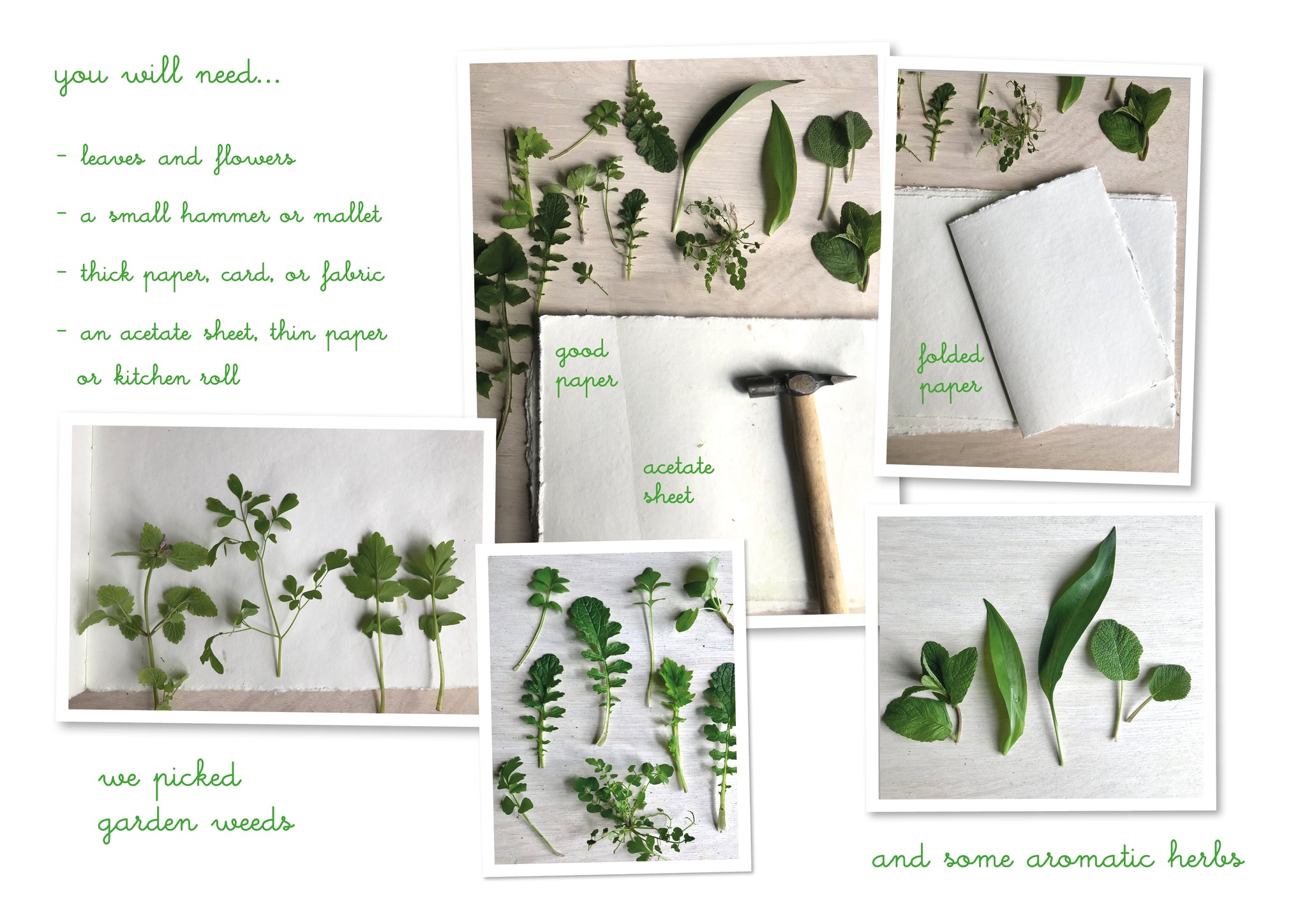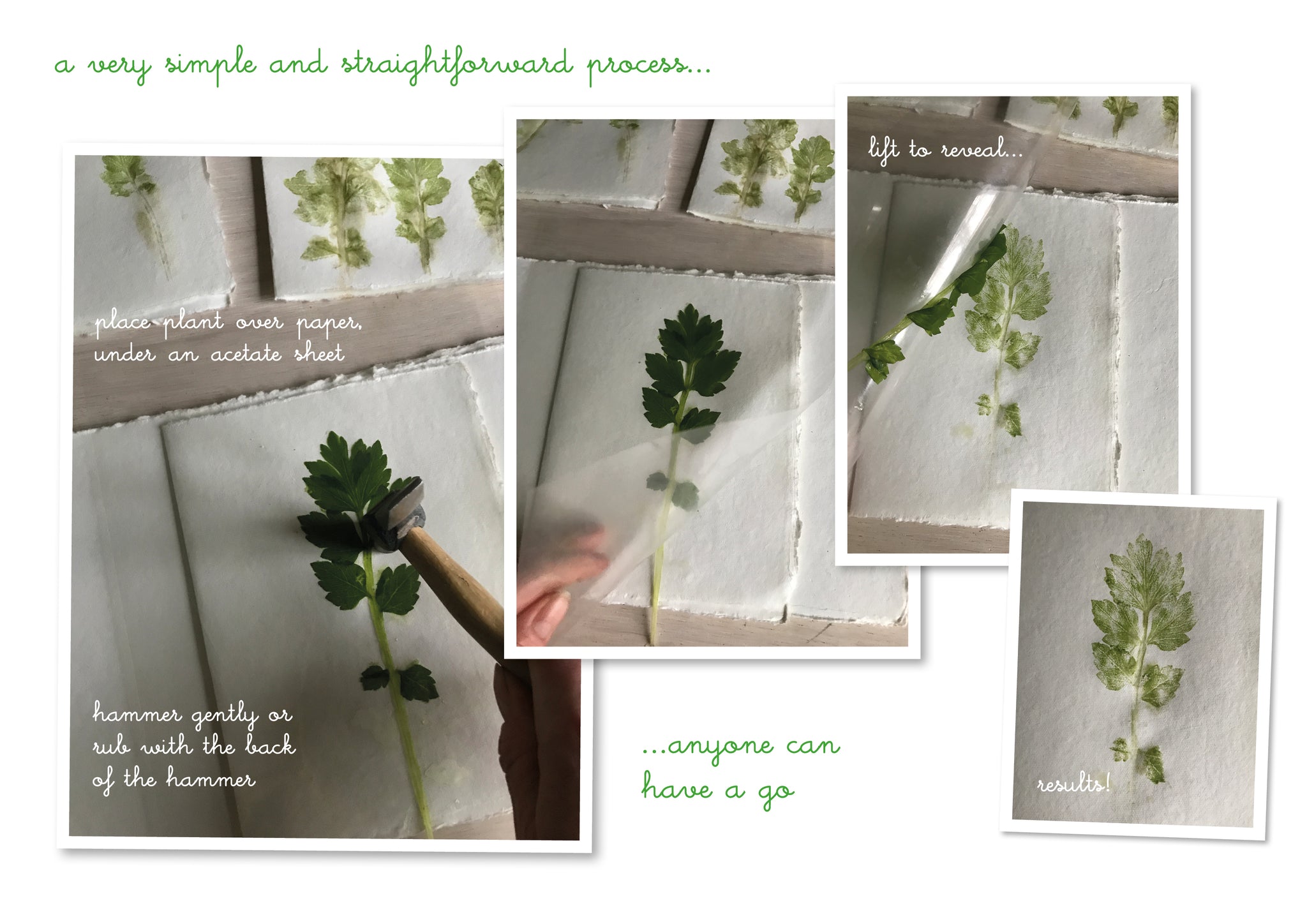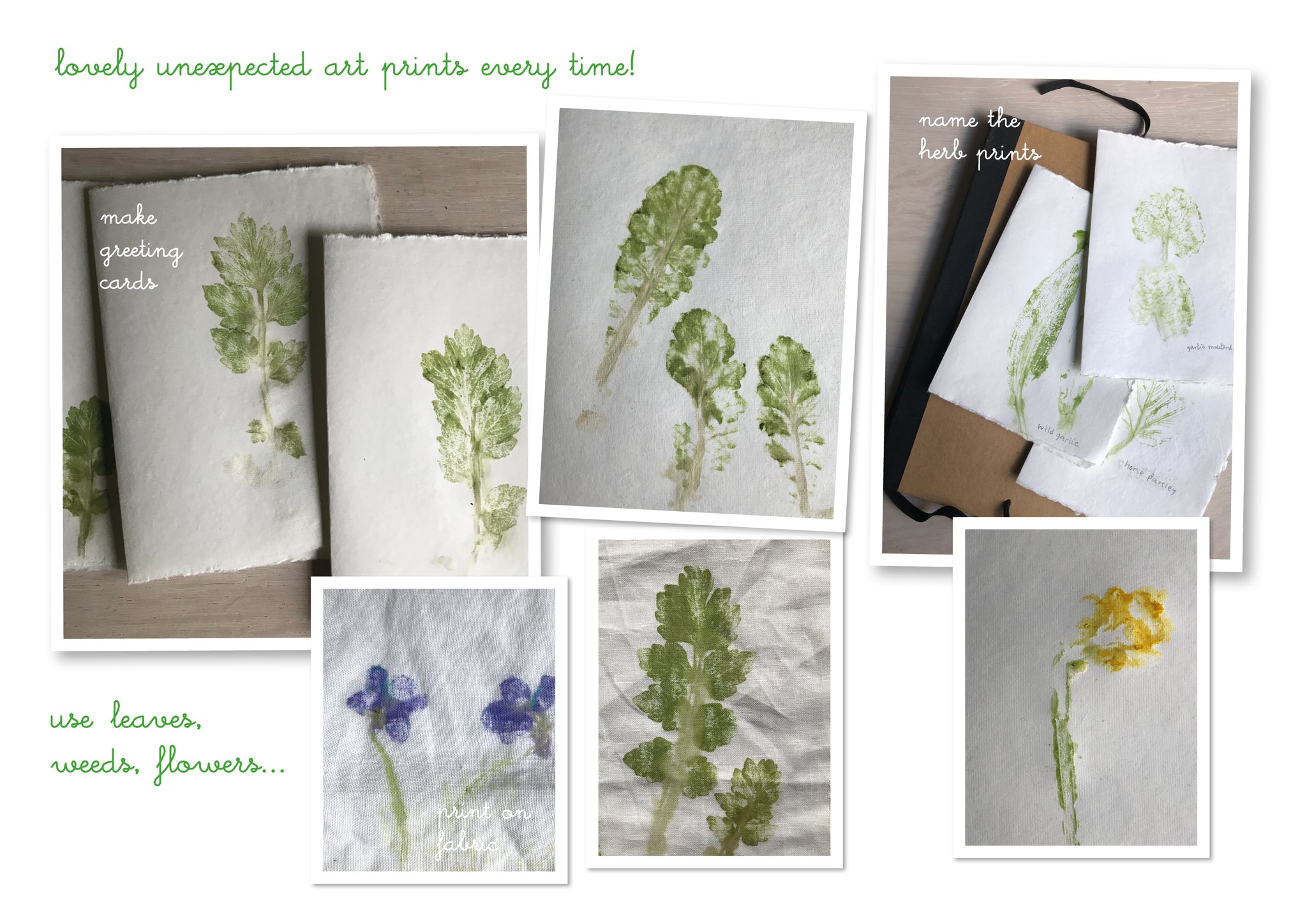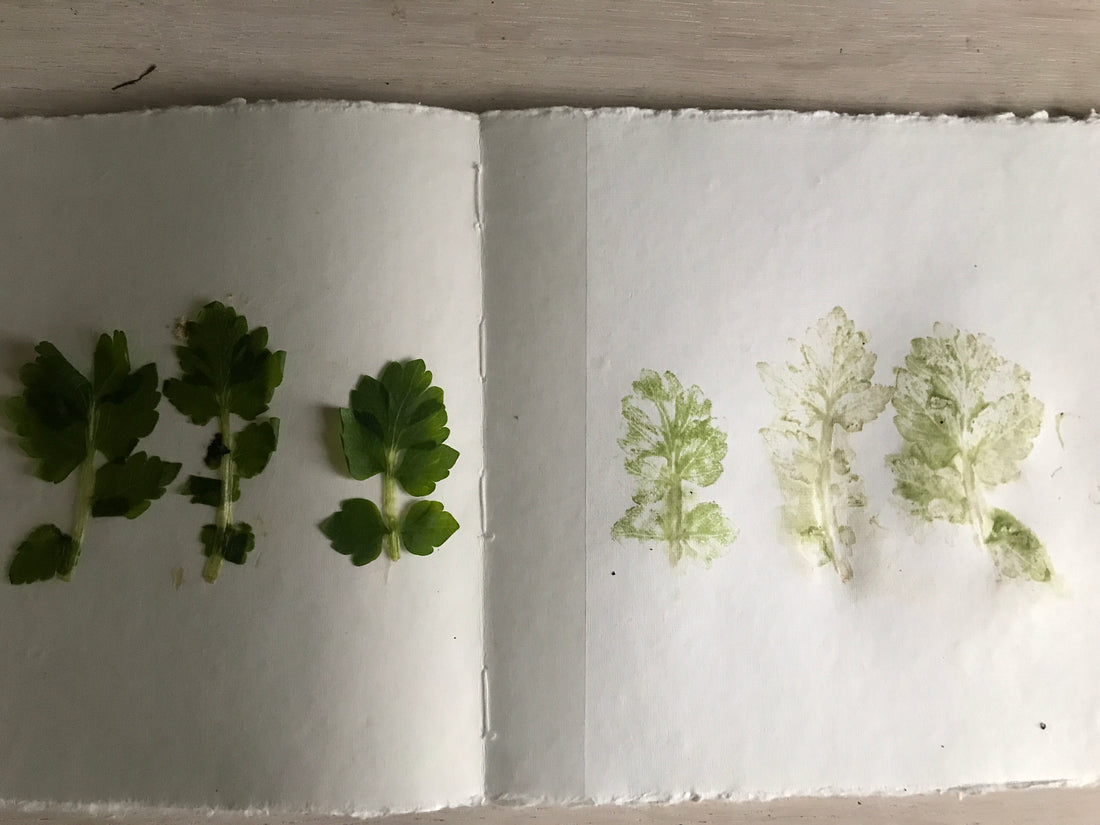botanic printing, a nature and art activity to inspire and engage your children. perfect for whiling away spring holidays.

this is an ancient technique for printing with plants, believed to have been used to illustrate botanical species for cataloguing. it’s a method of transferring the plant’s colour, texture and shape via hammering onto surfaces such as paper, card or fabric.
 first gather some foliage or flowers. weeds are ideal and plentiful at this time of year - they are often pretty shapes and transfer colour and texture well. then all you need is some paper, card or fabric and a small hammer or mallet to create beautiful botanical art prints.
first gather some foliage or flowers. weeds are ideal and plentiful at this time of year - they are often pretty shapes and transfer colour and texture well. then all you need is some paper, card or fabric and a small hammer or mallet to create beautiful botanical art prints.
it’s an easy creative project with satisfying end results.
you will need
- leaves and flowers
- a small hammer or mallet
- thick paper, card, or fabric
- kitchen roll, thin paper or an acetate sheet
 instructions
instructions
choose some pieces of paper, card or fabric and spread them out on a hard surface.
compose your image by placing plant elements onto the substrate. cover the composition, ideally with a sheet of clear acetate. thin paper or kitchen roll can be substituted, but acetate works best as you can see clearly through it and it can be wiped clean and reused.
gently hammer one leaf at a time, following its contour and making sure you cover all of it.
alternatively, just fold the card or fabric over the plant and hammer on top. this way you will get a print on both sides.
once all hammered, peel off the acetate or paper. remove any bits of plant left on your design and enjoy the results!

notes | ideas
try experimenting with different vegetation and papers to see what works best.
no need to use flowers, weeds are ideal and young tender ones transfer easily, sometimes just by rubbing with the hammer head.
sap blotches on the paper create an interesting pictorial effect.
try printing with flowers from a bouquet before discarding them, it’s a great way to keep the memory. make little art prints to frame or greeting cards to give to friends and family.
if you have older children, suggest picking to a theme, eg aromatic herbs. this becomes a sensory experience as each plant release their scent when you transfer them. encourage your children to identify each herb and complete the task by labelling them for future reference. you could even make the individual cards into a little culinary herb book.

